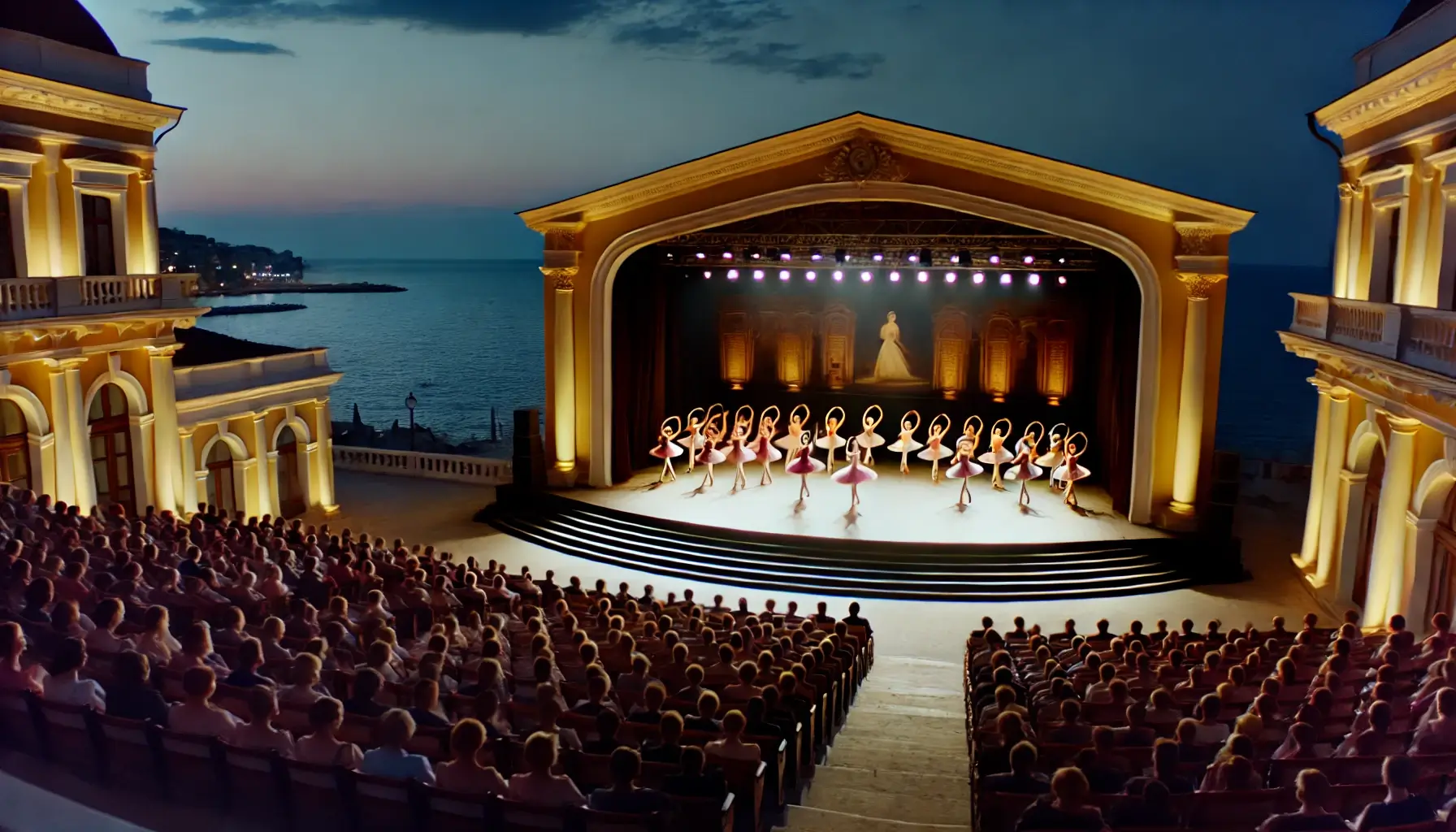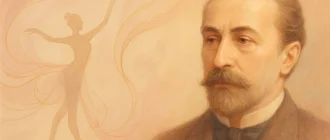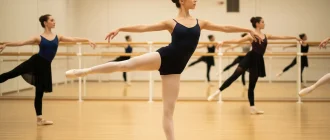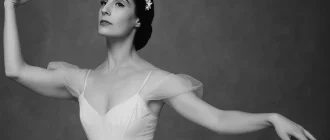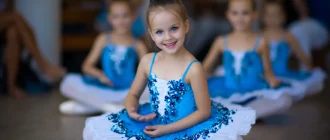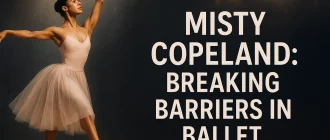The Varna International Ballet Competition, also known as the “Ballet Olympics,” is a major event for ballet dancers worldwide. Since 1964, it has been a launching pad for many careers. This article explores its history, structure, and the opportunities it provides.
Key Takeaways
- Established in 1964, the Varna International Ballet Competition is a premier international platform for ballet, similar to the Olympics in sports. It provides significant opportunities for dancers to gain recognition.
- The competition includes diverse categories for participants, structured by age groups. It allows dancers, from juniors to seniors, to showcase their talents in various styles and formations.
- Renowned for its rigorous evaluation process and high standards, the competition culminates in a gala night celebrating winners, reflecting its role in nurturing future ballet stars and enriching the global ballet community.
| Feature | Description |
|---|---|
| Founded | 1964 |
| Location | Varna, Bulgaria (Open-Air Theatre of the Marine Garden) |
| Frequency | Biennial (every two years) |
| Participation | Open to professional ballet dancers and students aged 15-26 from around the world |
| Categories | Junior and Senior divisions, with separate categories for male and female dancers |
| Judging Criteria | Technique, artistry, interpretation, stage presence, and overall performance |
| Jury Composition | An international panel of renowned ballet experts, including former dancers, choreographers, and directors from prestigious ballet companies |
| Awards | Gold, Silver, Bronze medals, and Special Prizes (including Best Partner, Best Coach, and Audience Award) |
| Significance | Known as a launching pad for many of the world’s most famous ballet dancers, winners often secure contracts with major ballet companies or gain scholarships. |
| Past Notable Winners | Mikhail Baryshnikov, Sylvie Guillem, Vladimir Vasiliev, and many other illustrious names in the ballet world |
| Associated Events | Masterclasses, workshops, exhibitions, and gala performances featuring past winners and current participants |
| Media Coverage | Extensive coverage by international dance publications, live streaming of performances, and post-event documentaries |
| Cultural Impact | Contributed to the promotion of classical ballet globally and helped sustain Bulgaria’s reputation as a hub for high-caliber ballet training |
Noteworthy Aspects:
- Historical Impact: The Varna International Ballet Competition has been crucial in the careers of many ballet stars, offering a significant stepping stone in their professional journeys.
- Cultural Significance: Beyond the competition, Varna has become a center of ballet excellence, attracting tourists and enthusiasts from around the world.
- Diverse Participation: The competition has a rich tradition of hosting dancers from various countries, fostering cultural exchange and diversity within the ballet community.
This competition continues to be a beacon for talent in the ballet world, maintaining its prestige and influence in shaping the future of the art form.
Overview of the Varna International Ballet Competition
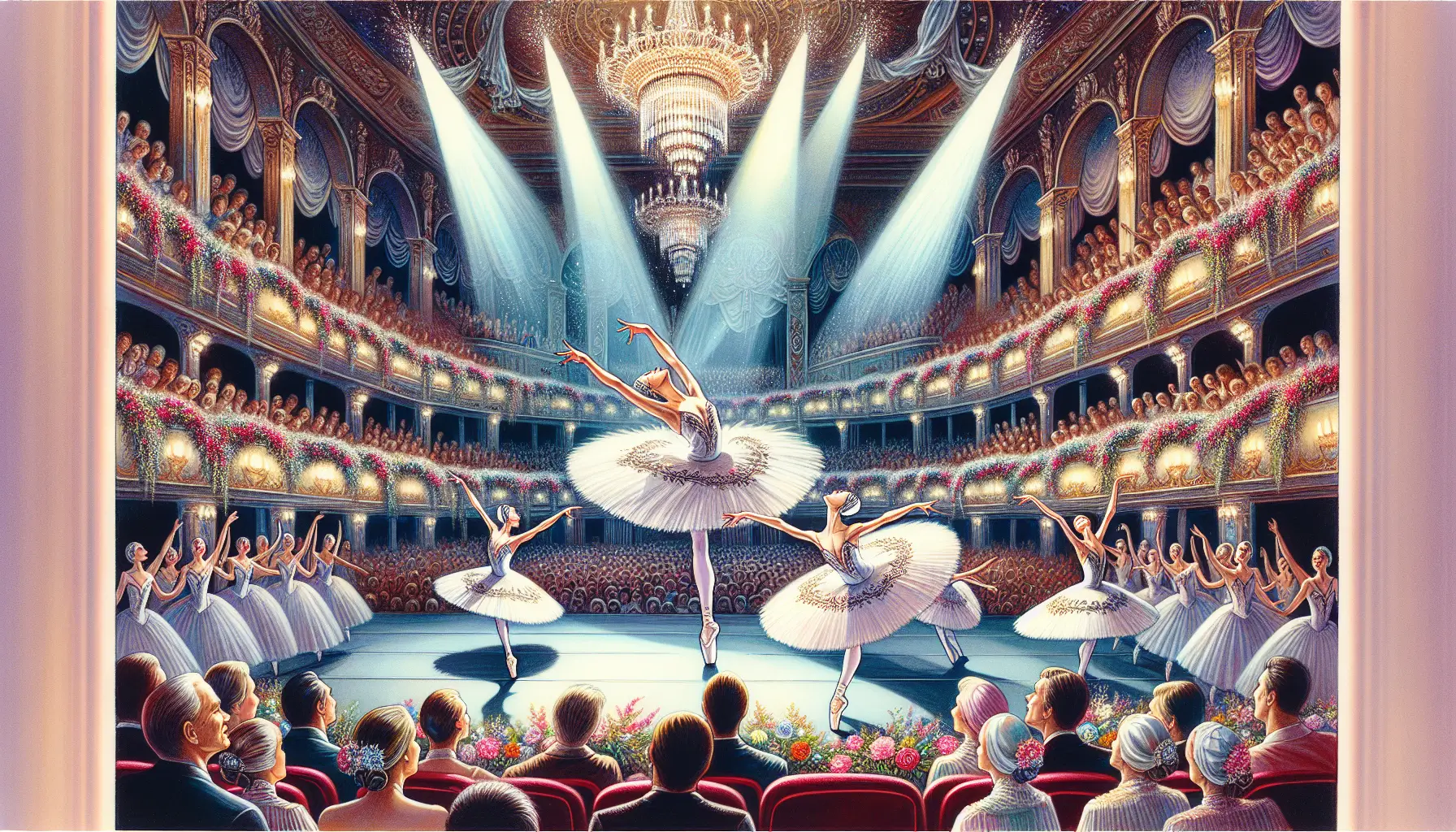
Initiated in 1964, the Varna International Ballet Competition is a monumental dance event. As the first professional international ballet competition, its significance is akin to that of the Olympics in sports. Founded by the Bulgarian Ministry of Culture, this prestigious competition aims to create an international platform for dancers, choreographers, and educators to showcase their extraordinary talents.
Held biennially, the Varna International Ballet Competition has become a pivotal event for the ballet community. The competition has elevated numerous ballet careers, providing dancers with unparalleled opportunities to gain international acclaim. The event celebrates individual excellence and fosters global camaraderie among participants from around the world.
The competition has a profound impact on the global ballet scene. It has inspired similar events in countries like Russia, the USA, and Japan, promoting worldwide appreciation for ballet. The competition has significantly enriched Varna’s and Bulgaria’s cultural heritage, cementing its place as a cornerstone of the international ballet landscape.
From its romantic open-air setting to its rigorous evaluation by a professional jury, the Varna International Ballet Competition is a testament to the dedication and passion that define the world of ballet. It is a stage where dreams are realized and the future stars of ballet are born.
Categories of Participation
The Varna International Ballet Competition offers diverse participation categories, ensuring dancers of all types can showcase their talents. Participants can compete in solo, duet, trio, and group performances. This variety showcases individual artistry and collaborative creativity.
Group categories, consisting of 4 to 8 performers, and formations, requiring nine or more dancers, are particularly exciting. These categories highlight the dancers’ technical skills and ability to work cohesively, bringing intricate choreographies to life on stage.
Age Groups and Levels
The Varna International Ballet Competition is meticulously structured to cater to participants of various age groups and skill levels, ensuring a fair and exciting contest for all. The competition is divided into two main age categories: Seniors and Juniors. Seniors include dancers under 26, while the Junior category is for those aged 15 to 19.
For the youngest participants, aged 7 to 9, the competition offers group and formation categories, focusing on classical ballet, contemporary dance, and character dance. This early exposure to competitive dance helps nurture their budding talents and instills a love for the art form from a young age.
The Junior category, which includes dancers born after July 15, 2001, and before July 14, 2005, provides a platform for young talents to shine on the international stage. Participants in this group can compete in various styles, including freestyle, contemporary, and acrobatic dance, allowing them to demonstrate their versatility and creativity.
The Senior group, comprising dancers born after July 15th, 1994, and before July 14th, 2001, is where some of the most technically proficient and artistically mature performances are seen. Awards and titles are distributed separately for Seniors and Juniors, ensuring that each age group receives recognition for their hard work and dedication.
Competition Rounds

The Varna International Ballet Competition is structured into three intense rounds, each designed to test the participants’ skills and artistry to the fullest. In the first round, all participants perform and are scored by the International Ballet Competitions Rules Committee, with no eliminations. This approach allows judges to evaluate all competitors before making any decisions.
The performances become increasingly demanding as the competition progresses to the second and third rounds. Participants must meet specific performance requirements and achieve a minimum score to advance. Only the most outstanding dancers make it through these rigorous stages, showcasing their abilities in various classical and contemporary pieces.
The competition allows 130 participants, ensuring high-quality and intense competition. The scoring system is meticulously designed to identify the most exceptional talents, ultimately leading to the selection of winners who truly exemplify excellence in ballet.
Classical Ballet Repertoire
The classical ballet repertoire is at the heart of the Varna International Ballet Competition, allowing dancers to demonstrate their technical prowess and artistic expression. Iconic pieces such as “Don Quixote,” “Swan Lake,” and “Sleeping Beauty” are frequently performed, each presenting unique challenges and opportunities for dancers.
“Don Quixote,” choreographed by Marius Petipa, is celebrated for its joyous themes and festive style, making it a favorite among both performers and audiences. Similarly, “Swan Lake,” with its tragic tale of love and betrayal set to Tchaikovsky’s hauntingly beautiful music, is a staple in the classical ballet repertoire. The intricate choreography and demanding roles, particularly for the lead characters, make these pieces a true test of a dancer’s skill.
“Sleeping Beauty,” another masterpiece by Tchaikovsky, is renowned for its complex choreography and the technical demands it places on dancers, especially those performing the role of Aurora. Performing these classics showcases dancers’ technical abilities and ability to convey deep emotions and narratives through their movements.
Including these timeless pieces in the competition highlights the enduring importance of classical ballet and its role in shaping the careers of aspiring dancers.
Pas de Deux and Variations
Pas de deux and variations are integral to the Varna International Ballet Competition, offering dancers a platform to display their technical excellence and emotional depth. Performances often include classical pieces from renowned ballets such as “La Bayadere” and “Giselle.” These pieces require technical precision, a strong partnership, and the ability to portray complex characters and emotions.
The Pas de Deux category also includes contemporary choreography, allowing participants to showcase their creativity and versatility. This blend of classical and modern styles enriches the competition and highlights the diverse talents of the dancers.
Awards in the Pas de Deux category recognize the achievements of both individual dancers and their partnerships, emphasizing the importance of collaboration and teamwork in ballet.
Daily Training and Master Classes
Daily training and masterclasses are essential components of the Varna International Ballet Competition, designed to enhance participants’ skills and prepare them for their performances. These sessions are tailored to accommodate various skill levels, ensuring that all dancers receive the support and guidance they need to excel.
Renowned instructors lead the master classes, providing personalized feedback and expert insights that help dancers refine their techniques and elevate their artistry. Participating in these classes is highly encouraged, as they offer invaluable learning experiences and opportunities for growth.
Rules and Guidelines
All participants must adhere to the Rules and guidelines of the Arna International Ballet Competition. Before the event, competitors must submit their performance details, including music tracks. This ensures the competition runs smoothly and all technical requirements are met.
Participants must provide their costumes, including rehearsal outfits and footwear. Additionally, they are responsible for arranging their travel and accommodation in Varna, reflecting the competition’s international nature and the dedication required to compete on this prestigious platform.
The scoring system is rigorous, with scores from the first round contributing to the overall evaluation. High-quality musical accompaniment is mandatory, and competitors can be disqualified for not following the prescribed versions of classical choreography. These rules ensure a fair and consistent judging process, maintaining the competition’s high standards.
Gala Evening and Awards
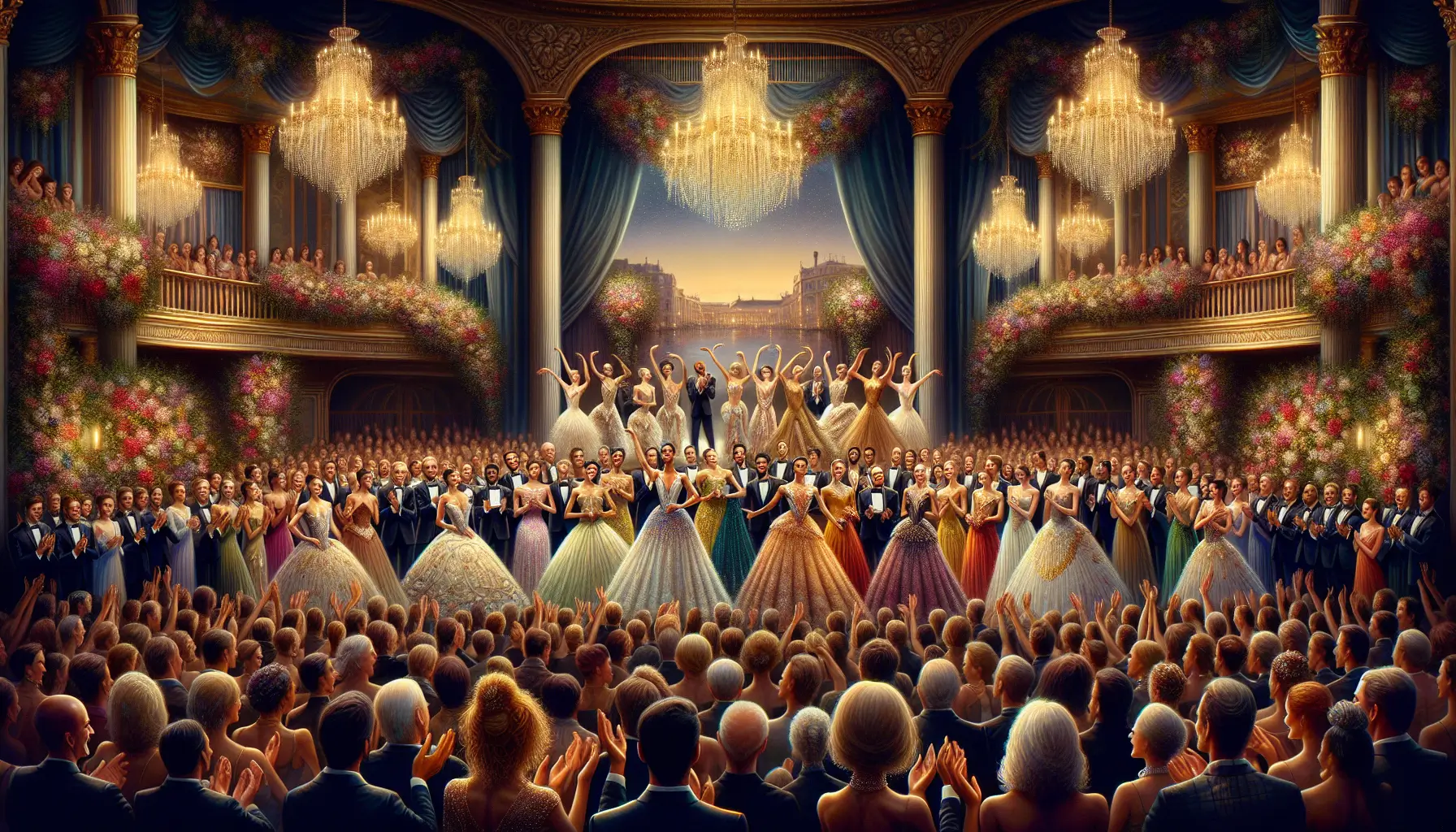
The gala evening is the highlight of the Varna International Ballet Competition, where the winners are celebrated in a grand ceremony. Held in a prominent venue, the gala exudes a celebratory atmosphere, marking the culmination of the intense competition.
Awards presented during the gala include gold, silver, and bronze medals, as well as special distinctions and prizes for various categories. This event not only honors the exceptional talents of the dancers but also brings together the global ballet community in a shared celebration of artistry and excellence.
Prominent Past Winners
The Varna International Ballet Competition has been a launching pad for many renowned ballet stars, providing them with their first significant international recognition. Dancers like Sinuo Chang, the 2018 Gold Medal winner, have gained widespread acclaim for their extraordinary talent and contributions to the ballet scene.
The competition is a crucial platform for young dancers to be noticed by international artistic directors, which can lead to potential contracts and performance opportunities. The achievements of past winners exemplify the competition’s role in shaping the future leaders of the ballet world.
These success stories highlight the importance of the Varna International Ballet Competition in fostering and recognizing exceptional talent, ensuring that ballet continues to thrive.
The Role of Choreography and Music
Choreography and music play pivotal roles in the Varna International Ballet Competition, significantly influencing the judges’ evaluations. A strong technical foundation allows dancers to execute variations and pas de deux confidently, showcasing their mastery of ballet technique. Judges often evaluate the synchronicity between choreography and music, as a well-matched performance demonstrates the dancers’ technical proficiency and artistic vision.
Innovative choreography can enhance a dancer’s performance, making it more memorable and impactful. This is crucial for scoring in competitions, where originality and artistic expression are highly valued.
The competition features a mix of classical and contemporary performances, reflecting the participants’ diverse talents and the ballet olympiad’s evolving nature.
Support and Development for Dancers

The Varna International Ballet Competition is committed to supporting the development of dancers through various programs and opportunities. Development programs affiliated with the competition program allow participants to train with leading experts in ballet and contemporary dance.
Many participants receive scholarship offers from prestigious ballet schools, facilitating further training and career advancement. These opportunities ensure that dancers continue to grow and refine their skills, contributing to the overall development of the ballet community.
Past winners, such as Loipa Araújo and Eric Vu-An, have significantly impacted ballet through teaching, performance, and choreography, exemplifying the competition’s role in nurturing talent and promoting artistic excellence.
Tradition and Legacy of Varna International Ballet

The tradition and legacy of the Varna International Ballet Competition are deeply rooted in its history of nurturing and launching the careers of celebrated dancers. The Foundation’s International Ballet Competition has supported the initiative – Varna’, established in 1992, to continue its legacy.
The competition is noted for its highly professional jury, consisting of prominent figures worldwide who ensure rigorous evaluation. This commitment to excellence has made the Varna International Ballet Competition a symbol of cultural exchange and artistic development.
By promoting classical ballet and contemporary dance, the competition fosters a diverse artistic expression, contributing to the rich cultural heritage of Varna and Bulgaria.
How to Participate
Dancers interested in participating in the Varna International Ballet Competition must submit their application by April 15, including a signed form and a receipt for the participation fee of EUR 200. There is a limit of 130 competitors, and applications will close once this number is reached.
Competitors must register at the competition secretariat between July 12th and 10:30 on July 14th, ensuring they are prepared and ready to compete.
Summary
The Varna International Ballet Competition is a beacon of excellence in ballet, offering dancers a prestigious platform to showcase their talents, gain international recognition, and advance their careers. From its rich history and diverse categories of participation to the rigorous competition rounds and the grand gala evening, the competition embodies the spirit of dedication, artistry, and cultural exchange that defines ballet.
As we celebrate the tradition and legacy of the Varna International Ballet Competition, it is clear that this event plays a crucial role in nurturing and developing the next generation of ballet stars. By providing an international stage for dancers to shine, the competition not only honors the timeless art of ballet but also ensures its vibrant future. Whether you are an aspiring dancer, a passionate ballet enthusiast, or simply someone who appreciates the beauty of dance, the Varna International Ballet Competition is a testament to the enduring power of ballet to inspire and transform lives.
Frequently Asked Questions
What is the significance of the Varna International Ballet Competition?
The Varna International Ballet Competition is significant as the first professional international ballet competition, established in 1964, and has been instrumental in advancing many ballet careers and inspiring similar competitions worldwide. Its legacy continues to shape the future of ballet on an international scale.
What are the age groups for participants in the competition?
Participants in the competition are divided into Juniors, ages 15 to 19, and Seniors, under 26 years old, with additional categories for younger individuals aged 7 to 9. This structure accommodates a wide range of ages while fostering a competitive spirit.
What types of performances can participants compete in?
Participants can compete in various performances, including solos, duets, trios, and group performances. Groups consist of 4 to 8 performers, and formations involve nine or more dancers.
How are the competition rounds structured?
The competition consists of three rounds, each with specific performance requirements. All participants are evaluated in the first round, and their scores determine whether they advance to the next stages.
How can dancers apply to participate in the competition?
Dancers can apply to participate in the competition by submitting their application, which includes a signed form and a receipt for the participation fee of EUR 200, by April 15. It is important to note that applications close once the limit of 130 competitors is reached.

